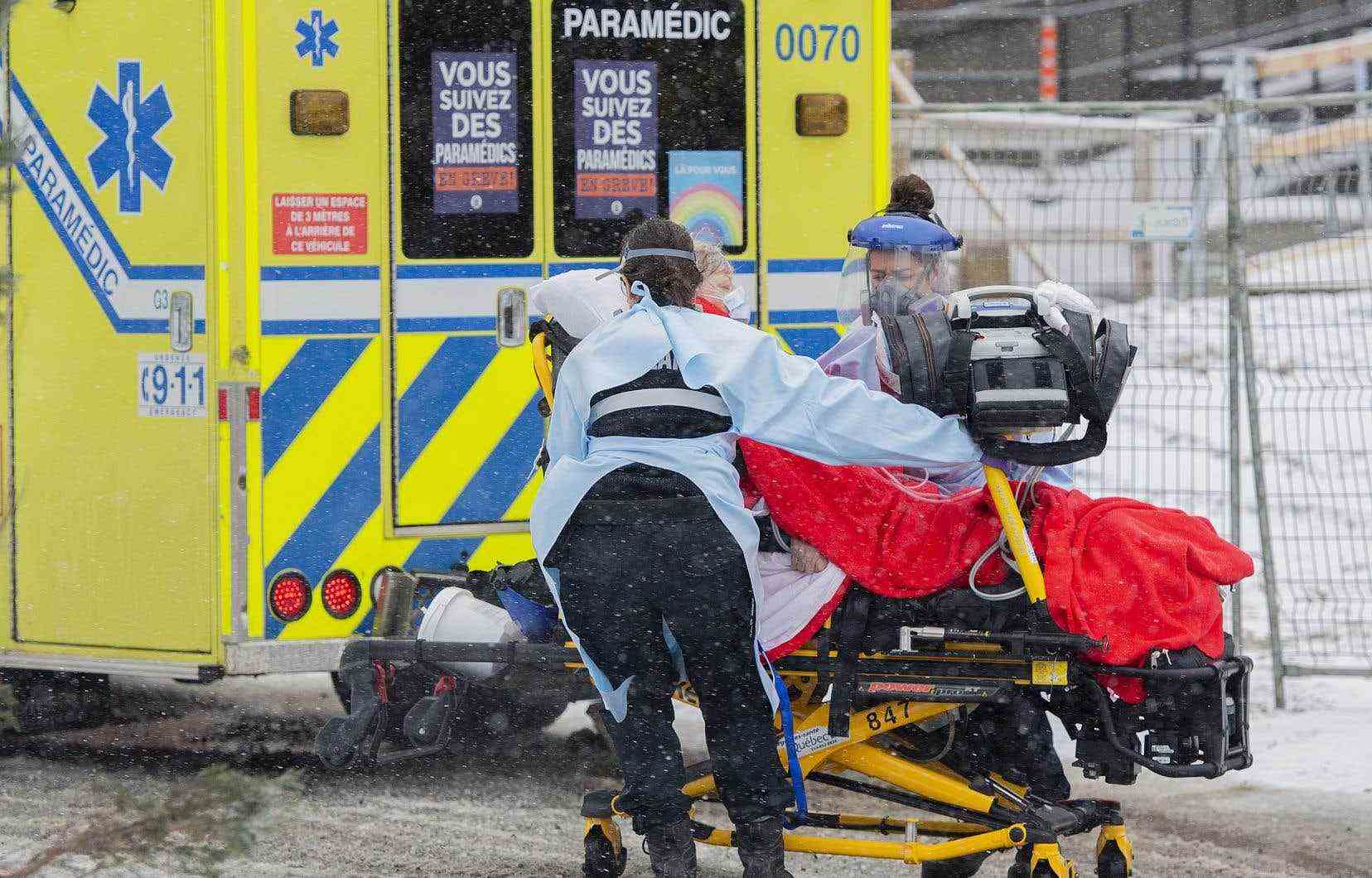2022 will have been the year of forgotten deaths from COVID-19 and Omicron’s impact on young children, with seven associated deaths, six times the number of hospitalizations and seven times the number of intensive care admissions where COVID was in question only in 2021.
Even if the pandemic of the century is no longer on many people’s radar, the assessment of the last year shows that its repercussions on the hospital system remain heavy. In 2022, it left in its wake 5,688 deaths, more than in 2021 (3,296), and more than tripled the number of hospitalizations compared to 2021 (15,264) and 2020 (14,779), even if, in some cases, COVID was not the primary diagnosis.
Waves among young people
The very high infectivity of Omicron especially affected more children. More than 2,500 young people aged 0 to 19 with COVID-19 have been hospitalized, whether the disease was the reason for hospitalization or not, and 171 children, often with other conditions, have been admitted to intensive care .
But according to figures compiled since the arrival of Omicron by the National Institute of Public Health of Quebec to measure the real burden of COVID in hospitalizations of children infected with SARS-CoV-2, the coronavirus has had a significant impact on infant hospitalizations. In almost 75% of hospital admissions “with COVID” in children under 5 months, this diagnosis was the root cause. This was the case for 55% of hospitalizations among 6 months to 4 year olds, but only 36% for 5 to 11 year olds and 24% for 12 to 17 year olds.
“It is certain that children were more affected in 2022. Because before Omicron, very few of them contracted COVID. It is the large volume of cases of infection that explains this explosion of hospitalizations. But as a percentage, there is not a greater proportion of infected children going to hospital or intensive care because of COVID,” says Dr.D Caroline Quach, pediatrician and infectious disease specialist at CHU Sainte-Justine.
Most of the children who died (7) or were admitted to intensive care (171) had underlying health conditions, especially young babies, she said.
Although COVID-19 remains present, it is a cocktail of respiratory viruses that has filled the beds of pediatric hospitals and caused the majority of intensive care admissions of young children since the fall.
“It’s not our enemyoh 1 right now, COVID. Above all, bacterial infections are added to influenza and other respiratory viruses. But children with complex illnesses are more vulnerable when they have COVID,” says Dr.D Valérie Lamarre, infectious disease specialist at CHU Sainte-Justine.
However, several doctors wonder about the impact that a prior infection with SARS-CoV-2 could have on the ability of the immune system of young children to fight the viral and bacterial infections involved in current hospitalizations, says the infectious disease specialist. .
“We know that after measles, for example, children are much more vulnerable to serious infections. Would COVID have the same effect? We do not know. It is too early to tell. Immunologists will have to look into this and more data to elucidate this, ”adds the DD Lamarre.
One thing is certain, the two infectiologists recall that parents must be extra careful on Christmas Eve to protect toddlers, especially infants. “Go to a party family with a baby less than a month old, forget it. Those older than 6 months can at least receive the influenza vaccine and the monovalent COVID vaccine. Stay at home too if older children have symptoms, ”recommends DD Quach.
“We have to adapt our conduct to the family context. But we can’t afford to receive people with symptoms, even if it’s not COVID, even with a mask. If we have a premature baby, we stay at home, ”adds the DD Lamarre.
The Forgotten Dead
While the burden of the pandemic has increased among toddlers in 2022, it remains minimal compared to that borne by vulnerable people and the elderly, who are still dying of COVID in large numbers. There were thus nearly 5,000 deaths in 2022 among people aged 70 and over, compared to 2,800 last year. Since Omicron, there have been more deaths among people aged 60 to 69 (492), 50s (174) and 30s (19) than at any other time since the start of the pandemic.
“The figures say something completely different than the general feeling that people have, that the pandemic is behind us,” explains the DD Cécile Tremblay, microbiologist-infectiologist at the University of Montreal Hospital Center.
“A lot of vulnerable or immunocompromised people continue to die, and it’s not going to go away, she says, because for these people, the vaccine is less effective and the monoclonal antibodies no longer work with Omicron. »
“We can celebrate Christmas, supports the DD Tremblay, but keeping a spirit of solidarity and showing common sense: no visits if you have symptoms! »
